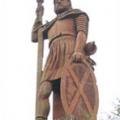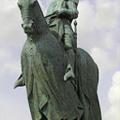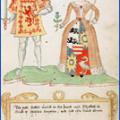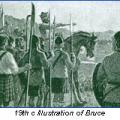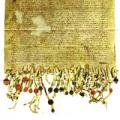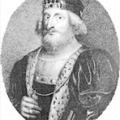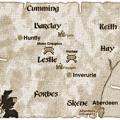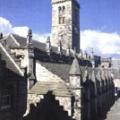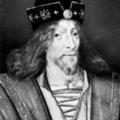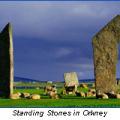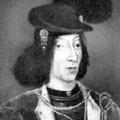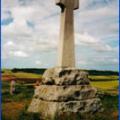Categories
Most Liked
Posted on July 17, 2013
by Amanda Moffet
by Amanda Moffet
Posted on May 12, 2013
by Chas Mac Donald
by Chas Mac Donald
Posted on August 29, 2013
by Amanda Moffet
by Amanda Moffet
Posted on February 6, 2013 by Donald | 0 views | comments
Continuing from his success against the English at the Battle of Stirling Bridge in 1297, William Wallace had continued his ‘liberation of Scotland’ with the recapture of Berwick and raids across Northumberland. In the name of the absent John Balliol he was made a Guardian of the Realm in the March ...
Posted on February 6, 2013 by Donald | 5 views | comments
In 1304, John Comyn II, known as the Red Comyn after his grandfather, moved his allegiance over to England’s Edward I and sat on his ‘Scottish Council’.
When Robert the Bruce set his plans to resume the War of Independence in 1306, he and Comyn met together in southerly Dumfries at the isolated Fran...
Posted on February 6, 2013 by Donald | 12 views | comments
After murdering John Comyn, the way was clear for Robert the Bruce to become King of Scotland without challenge.
His grandfather had first contested the Bruce family’s claim to the throne back in 1286. It was the hereditary office of the Earl of Fife to enthrone a Scottish king as they sat upon the...
Posted on February 6, 2013 by Donald | 6 views | comments
During the Wars of Independence, Philip de Mowbray agreed to surrender Stirling Castle if not assisted by England. Edward II therefore came across the border and by the time he left Edinburgh for Falkirk on the 22 June, he had amassed an army of sixteen thousand infantry and two and a half thousand ...
Posted on February 6, 2013 by Donald | 3 views | comments
Before Pope John XXII, Scotland had been recognised as an independent nation by the papacy. Pope John preferred Edward II’s version of who was ruler of Scotland however, and in 1319 he accused four Scottish bishops of rebellion and summoned them to answer to him.
Robert I had been King of Scotland ...
Posted on February 6, 2013 by Donald | 0 views | comments
In 1332 during an Anglo-Scots peace, Edward Balliol sailed with eighty-eight ships from the Humber to Fife and fought his way to Scone. His father John had abdicated in 1296 and Edward, claiming his family as still the true royal line, had himself crowned King of Scotland.
David II’s claim had the ...
Posted on February 6, 2013 by Donald | 2 views | comments
This battle, regarded by many today as the conflict between Highlanders and Lowlanders which killed the expansion of Gaelic influence, was one of the most brutal in Scottish history, becoming known as ‘Red Harlaw’.
While James I was growing up in English jails, Donald, Lord of the Isles made it his...
Posted on February 6, 2013 by Donald | 0 views | comments
St Andrews University is first mentioned in documents of 1410, but its birth is usually assigned to the charter given to Bishop Henry Wardlaw in 1412, endorsed the following year by Pope Benedict XIII.
This was Scotland’s first university and had Warlaw as its Chancellor, while Laurence of Lindores ...
Posted on February 6, 2013 by Donald | 1 views | comments
In 1424, when James I returned from eighteen years imprisonment in England, he set about dealing with those who declined to aid his release from prison earlier and curbing the power of Scotland’s nobles.
His continual law-making added to the number of enemies he acquired for himself.
The Earl of At...
Posted on February 6, 2013 by Donald | 4 views | comments
For six centuries the Orkney and Shetland Islands remained under Norwegian sovereignty, geographically central in a sea-faring Scandinavian civilisation which reached across the Atlantic.
The earldom of the islands was of great Norwegian importance. In the fifteenth century however, Norway had fall...
Posted on February 6, 2013 by Donald | 4 views | comments
James III’s policies infuriated many noble families, whilst drawing closer to him many more.
His unhappy opponents won to their side the King’s son, fifteen year old Prince James, and made it known that they intended to install him as monarch. This was the motivation behind the battle on 11 June at ...
Posted on February 6, 2013 by Donald | 3 views | comments
Flodden was a disastrous and unnecessary confrontation for Scotland. James IV of Scotland was married to the sister of England’s King Henry VIII and a treaty of friendship existed between their countries.
The auld alliance between Scotland and France had been recently renewed. There had been Englis...
Featured Articles
Most Discussed
Posted on July 16, 2013
by Amanda Moffet
by Amanda Moffet
Posted on February 6, 2013
by Donald
by Donald
Posted on July 17, 2013
by Amanda Moffet
by Amanda Moffet


 View More
View More View Less
View Less